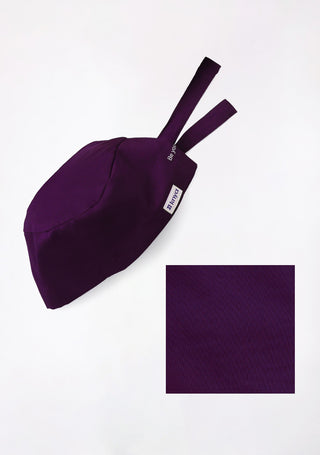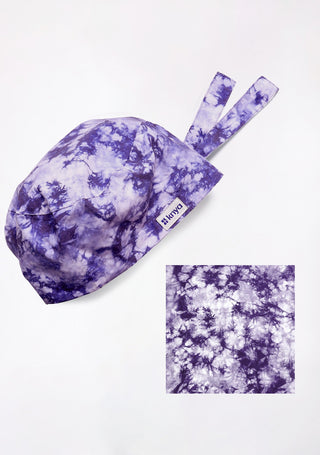For nurses, scrubs are more than just uniforms—they are a part of daily life. Whether it’s a long shift in a busy hospital or a night in the ICU, scrubs endure constant exposure to patients, bodily fluids, and contaminants. This raises an important question: how often should a nurse change her scrubs?
The answer goes beyond just hygiene—it’s about safety, professionalism, and personal well-being. In this blog, we explore how frequently nurses should change their scrubs, the science behind it, and how brands like Knya ensure comfort and cleanliness for those on the frontlines.
Click here to explore comfortable lab coats and discover our complete collection of comfortable and stylish medical apparel
Why Changing Scrubs Regularly Matters?
1. Infection Prevention
The most critical reason for changing scrubs frequently is infection control. Studies have shown that pathogens like bacteria, viruses, and fungi can live on clothing for hours—or even days. Nurses working in high-risk departments such as emergency, surgery, or intensive care are especially exposed to these contaminants. Wearing freshly washed scrubs daily helps prevent cross-contamination between patients and healthcare workers.
2. Maintaining Professional Appearance
Clean scrubs communicate professionalism. Patients and families often associate cleanliness with trust and competence. Wrinkled or stained scrubs can unintentionally send the wrong message. By wearing a fresh pair every day, nurses project a polished, confident image that reflects both personal and institutional standards.
3. Comfort and Confidence
Fresh scrubs don’t just look better—they feel better. Nurses often work long, physically demanding shifts, and wearing soft, breathable scrubs like those from Knya can make a real difference. Moisture-wicking and odor-resistant fabrics help maintain comfort, boost confidence, and reduce fatigue throughout the day.
Recommended Frequency: How Often Should Scrubs Be Changed?
Daily Changes Are Ideal
Nurses should change their scrubs after every shift, especially when working in clinical or hospital settings. Even if scrubs don’t look visibly dirty, microscopic pathogens may still cling to the fabric. Washing scrubs daily minimizes the risk of carrying contaminants home or transferring them to others.
Immediate Change for Soiled Scrubs
If scrubs come into contact with any bodily fluids, medications, or chemicals, they should be changed immediately. Keeping an extra pair of clean scrubs in a locker or bag ensures you’re prepared for such emergencies.
Changing Between Departments
When moving between sterile and non-sterile areas—like from a general ward to an operating theatre—it’s important to change into department-specific scrubs. This helps maintain strict hygiene standards and reduces contamination risk in sensitive environments.
At Home or Community Care Settings
Nurses working in outpatient clinics, home care, or community settings may not face as much contamination risk as those in hospitals. Still, daily changes are recommended for freshness, odor control, and maintaining a professional image.
Best Practices for Washing Scrubs
-
Separate Scrubs from Regular Laundry
Always wash scrubs separately to prevent cross-contamination with household clothes.
-
Use Hot Water and Disinfectant Detergent
Wash scrubs in hot water (at least 60°C) with antibacterial detergent or a mild disinfectant for effective cleaning.
-
Avoid Fabric Softeners
While they make clothes smell good, fabric softeners can coat fibers and reduce the scrub’s breathability and moisture control.
-
Dry Completely
Air-dry under sunlight or use a high-heat dryer to eliminate any remaining microbes.
-
Iron or Steam if Needed
Ironing not only makes scrubs look neat but also adds an extra layer of sanitization.
Ready to explore our amazing scrubs collection? Browse the best here
How Many Sets of Scrubs Does a Nurse Need?
For full-time nurses working 5 to 6 shifts a week, having at least 5–7 sets of scrubs is ideal. This allows for one clean pair per day, plus extras for emergencies or double shifts.
Knya scrubs are designed for long-lasting wear, so nurses can rotate them easily without worrying about fading, stretching, or losing comfort after multiple washes.
Signs It’s Time to Replace Your Scrubs
Even with regular washing, scrubs eventually wear out. Here are signs it’s time for a new set:
-
Color fading or visible stains that don’t wash off
-
Loose stitching or fabric thinning in high-friction areas
-
Loss of elasticity around the waist or cuffs
-
Persistent odors, even after washing
When these signs appear, it’s best to replace your old scrubs with fresh ones. Knya’s scrubs offer durable fabric blends and superior stitching that withstand repeated washing without losing shape or softness.
The Knya Advantage: Clean, Comfortable, and Confident
Knya understands the demanding nature of nursing. That’s why its scrubs are designed with both hygiene and comfort in mind. Breathable fabrics, modern fits, and antimicrobial technology make them ideal for long shifts. Whether you’re working in wards, OTs, or clinics, Knya scrubs help you stay clean, confident, and professional all day long.
Conclusion
Changing scrubs regularly isn’t just about looking good—it’s about staying safe, professional, and comfortable. For nurses, the ideal practice is to wear a clean pair of scrubs every shift and immediately change if soiled. Regular washing and rotation maintain hygiene and extend the life of your uniforms.
With Knya scrubs, nurses can balance practicality with comfort, ensuring that every shift starts fresh and ends strong. Clean scrubs reflect not only your professionalism but also your care—for yourself, your patients, and your workplace.












